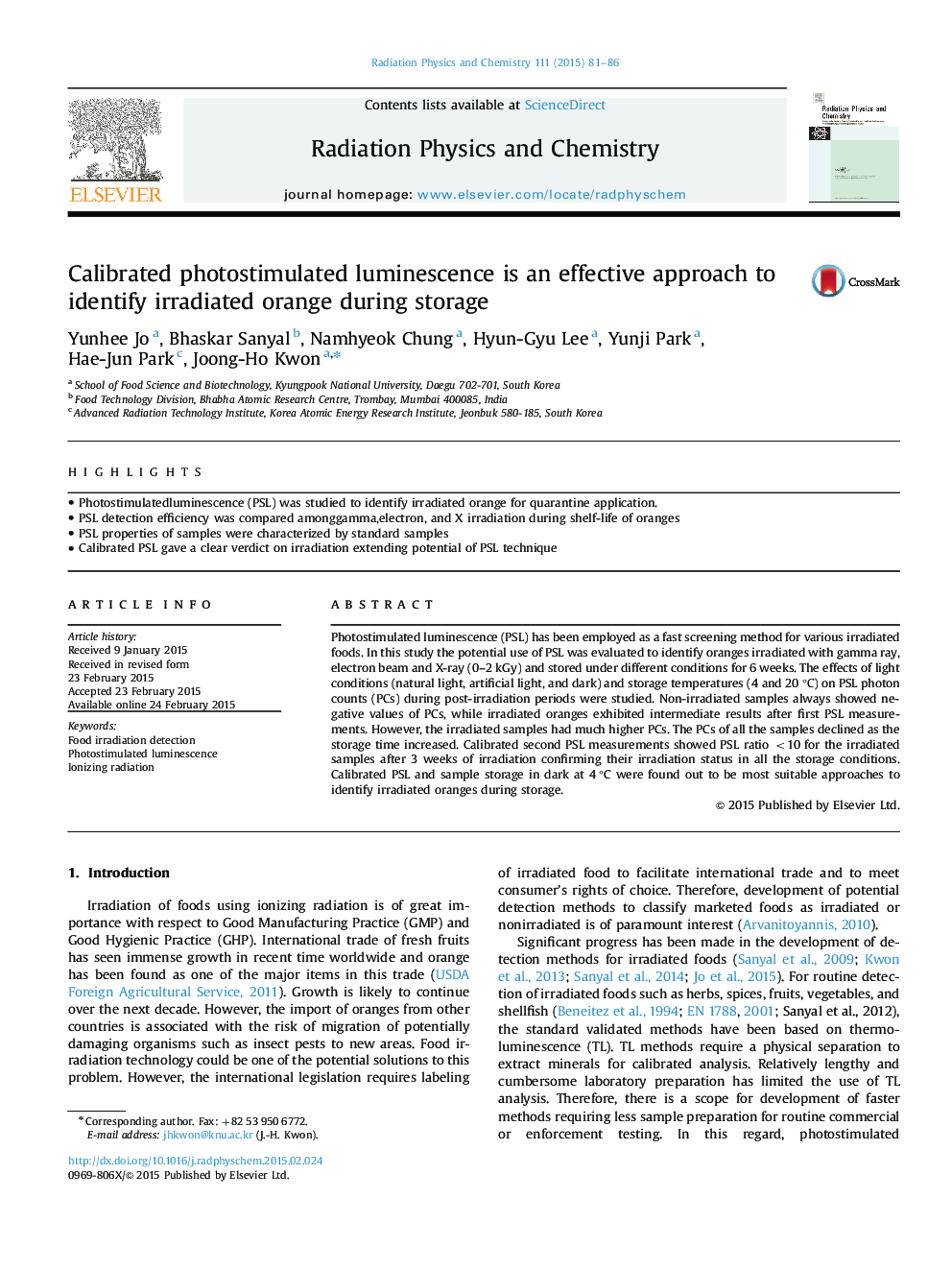| Article ID | Journal | Published Year | Pages | File Type |
|---|---|---|---|---|
| 1882378 | Radiation Physics and Chemistry | 2015 | 6 Pages |
•Photostimulatedluminescence (PSL) was studied to identify irradiated orange for quarantine application.•PSL detection efficiency was compared amonggamma,electron, and X irradiation during shelf-life of oranges•PSL properties of samples were characterized by standard samples•Calibrated PSL gave a clear verdict on irradiation extending potential of PSL technique
Photostimulated luminescence (PSL) has been employed as a fast screening method for various irradiated foods. In this study the potential use of PSL was evaluated to identify oranges irradiated with gamma ray, electron beam and X-ray (0–2 kGy) and stored under different conditions for 6 weeks. The effects of light conditions (natural light, artificial light, and dark) and storage temperatures (4 and 20 °C) on PSL photon counts (PCs) during post-irradiation periods were studied. Non-irradiated samples always showed negative values of PCs, while irradiated oranges exhibited intermediate results after first PSL measurements. However, the irradiated samples had much higher PCs. The PCs of all the samples declined as the storage time increased. Calibrated second PSL measurements showed PSL ratio <10 for the irradiated samples after 3 weeks of irradiation confirming their irradiation status in all the storage conditions. Calibrated PSL and sample storage in dark at 4 °C were found out to be most suitable approaches to identify irradiated oranges during storage.
